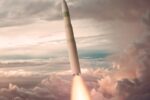The U.S. Air Force has deployed a B-1B Lancer bomber task force to Misawa Air Base in northern Japan for the first time, marking a significant shift in strategic bomber operations within the Indo-Pacific region. The move underscores Washington’s evolving posture toward integrated deterrence and rapid power projection amid escalating tensions with China and North Korea.
First-Ever B-1 Deployment to Misawa Reflects Strategic Flexibility
On June 14, 2024, the U.S. Air Force Global Strike Command (AFGSC) confirmed that a contingent of B-1B Lancers from the 28th Bomb Wing at Ellsworth AFB had arrived at Misawa Air Base as part of a Bomber Task Force (BTF) deployment under U.S. Indo-Pacific Command (INDOPACOM). This marks the first time that B-1s have operated out of Misawa—a base traditionally focused on fighter and ISR operations.
The deployment is part of routine BTF rotations designed to enhance interoperability with allies and demonstrate flexible global strike capability. However, basing heavy bombers at Misawa—closer to potential flashpoints such as Taiwan or the Korean Peninsula—signals a more forward posture than previous deployments to Andersen AFB in Guam or even Yokota AB near Tokyo.
Operational Objectives: Agile Combat Employment and Regional Integration
The deployment supports Agile Combat Employment (ACE) concepts by dispersing high-value assets across multiple locations to complicate adversary targeting calculus. According to Pacific Air Forces (PACAF), this forward presence enables dynamic force employment while strengthening bilateral coordination with the Japan Air Self Defense Force (JASDF).
- Enhance joint training with JASDF units operating F-35A and F-15J fighters
- Demonstrate long-range strike capabilities across the First Island Chain
- Exercise command-and-control resilience through distributed operations
- Support deterrence messaging toward China’s PLA Rocket Force and North Korea’s missile program
Misawa is uniquely positioned for these objectives due to its proximity to key maritime chokepoints like the Tsugaru Strait and its robust infrastructure supporting both U.S. Navy P-8A Poseidons and USAF ISR platforms like RC-135 Rivet Joint aircraft.
Bomber Task Forces as Tools of Integrated Deterrence
BTF missions have become central tools under INDOPACOM’s “integrated deterrence” framework—combining conventional forces with allied cooperation and multi-domain integration. Since early 2020, BTFs have regularly deployed from continental U.S. bases to Europe and Asia without relying on permanent overseas basing.
This model allows for:
- Strategic unpredictability by varying basing locations
- Sustained readiness through real-world mission profiles
- Increased partner nation engagement via joint exercises like Cope North or Vigilant Storm
- Reduced political friction associated with permanent forward basing
The current deployment aligns closely with recent Japanese defense white papers emphasizing counterstrike capabilities and deeper alliance integration under Tokyo’s new National Security Strategy.
B-1B Capabilities: Conventional Strike Without Nuclear Constraints
The Rockwell B-1B Lancer remains one of the most versatile long-range bombers in the USAF inventory despite being denuclearized under START treaties. Key features include:
- Cruise speed over Mach 1.2 at altitude; subsonic low-level penetration capability
- Maximum payload exceeding 34 metric tons (75,000 lbs)
- Internal rotary launchers supporting JDAMs, LRASM cruise missiles, GBU-series bombs
- A range of ~12,000 km unrefueled; extendable via aerial refueling
- Synthetic Aperture Radar (SAR) for precision targeting in contested environments
The aircraft’s ability to carry standoff munitions like AGM-158 JASSM or future hypersonic weapons makes it particularly suited for anti-access/area denial (A2/AD) scenarios prevalent in East Asia.
Tactical Implications for China and North Korea Watchers
This deployment sends calibrated signals across multiple threat vectors:
– Against China: It demonstrates rapid bomber dispersal capability beyond Guam’s fixed infrastructure—potentially complicating PLA Rocket Force targeting plans.
– Against North Korea: It reinforces extended deterrence commitments without escalating into permanent basing optics.
– For regional allies: It reassures partners like South Korea and Australia that U.S. strike assets can operate flexibly across distributed nodes.
Moreover, if paired with live-fire drills or joint maritime surveillance ops near disputed waters or ADIZ zones—as seen during previous deployments—it could serve as both deterrent messaging and ISR collection opportunity.
The timing also coincides with increased Chinese military activity around Taiwan following recent presidential elections there.
Future Outlook: Toward More Distributed Bomber Operations?
This deployment may foreshadow broader changes in how AFGSC conducts global strike missions under peer competition conditions. The USAF is investing heavily in ACE-aligned infrastructure upgrades across Pacific islands—including Tinian Island—and exploring new Forward Operating Locations (FOLs) beyond traditional hubs like Guam or Kadena AB.
If successful at Misawa—logistically and diplomatically—the model could expand into other Japanese bases such as Chitose or Nyutabaru where runway length permits bomber ops. Additionally:
- The upcoming arrival of the B-21 Raider stealth bomber may further diversify forward-basing options due to its smaller logistics footprint compared to legacy bombers.
- PACAF may integrate more advanced C4ISR nodes into these deployments using Link-16 upgrades or Joint All-Domain Command & Control (JADC2) architecture.
- Japan’s own acquisition plans—including Tomahawk missiles and stand-off air-launched weapons—may support deeper interoperability during such rotations.
This posture evolution reflects not only an operational shift but also an alliance recalibration toward shared risk management in contested domains.
Conclusion: Strategic Messaging Backed by Operational Credibility
The unprecedented deployment of B-1Bs to Misawa underscores a maturing approach by INDOPACOM toward dynamic force employment amid intensifying great power competition. Beyond symbolic value, it demonstrates credible long-range strike options integrated within allied networks—a key pillar of modern deterrence strategy against revisionist actors like China or destabilizing regimes like North Korea.
If sustained through future rotations—and potentially expanded through multilateral exercises—the move could reshape expectations around U.S.-Japan defense cooperation well into this decade’s strategic calculus.










